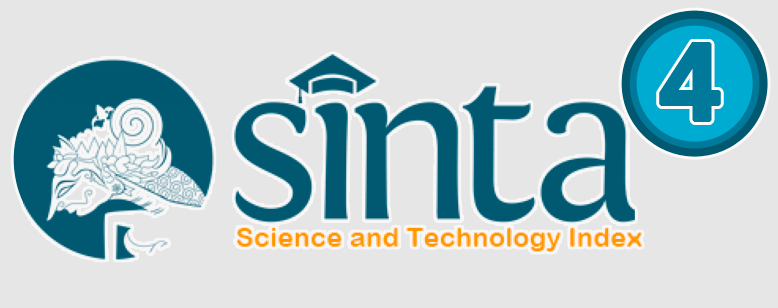Ethical and Legal Analysis of Child Disease Epidemiology Due to Environmental Exposure: A Systematic Literature Review
Abstract
Introduction: Children are the most vulnerable group affected by environmental exposure, such as air pollution, contaminated water, chemicals, and heavy metals. This exposure increases the risk of respiratory, neurological disorders, and developmental delays, with both short-term and long-term impacts extending into adulthood. Recent studies have shown a high prevalence of diseases related to these exposures, such as asthma, neurological developmental delays, and cancer at young ages, emphasizing the need for a deeper science-based approach. However, the ethical and legal aspects of preventing and controlling environmental exposure remain insufficiently discussed in the scientific literature.
Methods: This study uses a systematic literature review approach to analyze the relationship between environmental exposure and child disease epidemiology, focusing on ethical and legal dimensions. Relevant journal articles from 2015 to 2024 were reviewed through various databases using specific keywords and Boolean operators. Inclusion criteria included studies discussing child disease epidemiology and ethical or legal analyses related to environmental exposure.
Results: The analysis indicates that ethical frameworks and legal regulations are crucial in ensuring the protection of children from environmental exposure risks. Developed countries have stricter regulations but often face challenges in implementation. In contrast, developing countries need more integrated policies informed by epidemiological research. A global approach and international collaboration are crucial to addressing the cross-border impacts of environmental contamination.
References
Ali, M. (2023). Navigating Smog: Legislation Addressing Children’s Right to Health in India and Pakistan. Human Rights in the Global South (HRGS). https://doi.org/10.56784/hrgs.v2i2.74.
Bougault V, Valorso R, Sarda-Esteve R, Baisnee D, Visez N, Oliver G, Bureau J, Abdoussi F, Ghersi V, Foret G. Paris air quality monitoring for the 2024 Olympics and Paralympics: focus on air pollutants and pollen. Br J Sports Med. 2024 Sep 4;58(17):973-982. doi: 10.1136/bjsports-2024-108129. PMID: 39054048; PMCID: PMC11420723.
Grant, T., & Wood, R. (2022). The influence of urban exposures and residence on childhood asthma. Pediatric Allergy and Immunology, 33. https://doi.org/10.1111/pai.13784.
Heng, Y., Asad, I., Coleman, B., Menard, L., Benki-Nugent, S., Were, F., Karr, C., & McHenry, M. (2022). Heavy metals and neurodevelopment of children in low and middle-income countries: A systematic review. PLoS ONE, 17. https://doi.org/10.1371/journal.pone.0265536.
Krencker FN, Lindström S, Bodin S. A major sea-level drop briefly precedes the Toarcian oceanic anoxic event: implication for Early Jurassic climate and carbon cycle. Sci Rep. 2019 Aug 29;9(1):12518. doi: 10.1038/s41598-019-48956-x. PMID: 31467345; PMCID: PMC6715628.
Krencker FN, Lindström S, Bodin S. A major sea-level drop briefly precedes the Toarcian oceanic anoxic event: implication for Early Jurassic climate and carbon cycle. Sci Rep. 2019 Aug 29;9(1):12518. doi: 10.1038/s41598-019-48956-x. PMID: 31467345; PMCID: PMC6715628.
Laborde, A., Tomasina, F., Bianchi, F., Bruné, M., Buka, I., Comba, P., Corra, L., Cori, L., Duffert, C., Harari, R., Iavarone, I., McDiarmid, M., Gray, K., Sly, P., Soares, A., Suk, W., & Landrigan, P. (2014). Children’s Health in Latin America: The Influence of Environmental Exposures. Environmental Health Perspectives, 123, 201 - 209. https://doi.org/10.1289/ehp.1408292.
Malvezzi M, Carioli G, Bertuccio P, Boffetta P, Levi F, La Vecchia C, Negri E. European cancer mortality predictions for the year 2019 with focus on breast cancer. Ann Oncol. 2019 May 1;30(5):781-787. doi: 10.1093/annonc/mdz051. PMID: 30887043.
Mannen H, Iso K, Kawaguchi F, Sasazaki S, Yonezawa T, Dagong MIA, Bugiwati SRA. Indonesian native goats (Capra hircus) reveal highest genetic frequency of mitochondrial DNA haplogroup B in the world. Anim Sci J. 2020 Jan-Dec;91(1):e13485. doi: 10.1111/asj.13485. PMID: 33222357.
Mohammad, N., Abidin, E., How, V., Praveena, S., & Hashim, Z. (2018). Pesticide management approach towards protecting the safety and health of farmers in Southeast Asia. Reviews on Environmental Health, 33, 123 - 134. https://doi.org/10.1515/reveh-2017-0019.
Navarrete-Meneses, M., Salas-Labadía, C., Gómez-Chávez, F., & Pérez-Vera, P. (2024). Environmental Pollution and Risk of Childhood Cancer: A Scoping Review of Evidence from the Last Decade. International Journal of Molecular Sciences, 25. https://doi.org/10.3390/ijms25063284.
Perera, F. (2017). Pollution from Fossil-Fuel Combustion is the Leading Environmental Threat to Global Pediatric Health and Equity: Solutions Exist. International Journal of Environmental Research and Public Health, 15. https://doi.org/10.3390/ijerph15010016.
Roth, D. (2003). An ethics-based approach to global child health research. Paediatrics & child health, 8 2, 67-71 . https://doi.org/10.1093/PCH/8.2.67.
Sapbamrer, R., & Hongsibsong, S. (2019). Effects of prenatal and postnatal exposure to organophosphate pesticides on child neurodevelopment in different age groups: a systematic review. Environmental Science and Pollution Research, 26, 18267-18290. https://doi.org/10.1007/s11356-019-05126-w.
Xu, Z., Sheffield, P., Hu, W., Su, H., Yu, W., Qi, X., & Tong, S. (2012). Climate Change and Children’s Health—A Call for Research on What Works to Protect Children. International Journal of Environmental Research and Public Health, 9, 3298 - 3316. https://doi.org/10.3390/ijerph9093298.
Copyright (c) 2024 Nur Hamdani Nur, Milda, Sitti Arifah, Yeni Paramata, Indar

This work is licensed under a Creative Commons Attribution-ShareAlike 4.0 International License.
Authors who publish with this journal agree to the following terms:
- Authors retain copyright and grant the journal right of first publication with the work simultaneously licensed under a Creative Commons Attribution-Non Commercial License that allows others to share the work with an acknowledgment of the work's authorship and initial publication in this journal.
- Authors are able to enter into separate, additional contractual arrangements for the non-exclusive distribution of the journal's published version of the work (e.g., post it to an institutional repository or publish it in a book), with an acknowledgment of its initial publication in this journal.
- Authors are permitted and encouraged to post their work online (e.g., in institutional repositories or on their website) prior to and during the submission process, as it can lead to productive exchanges, as well as earlier and greater citation of published work.
The content of this website is licensed under a Creative Commons Attribution-ShareAlike 4.0 International (CC BY-SA 4.0) license. 












